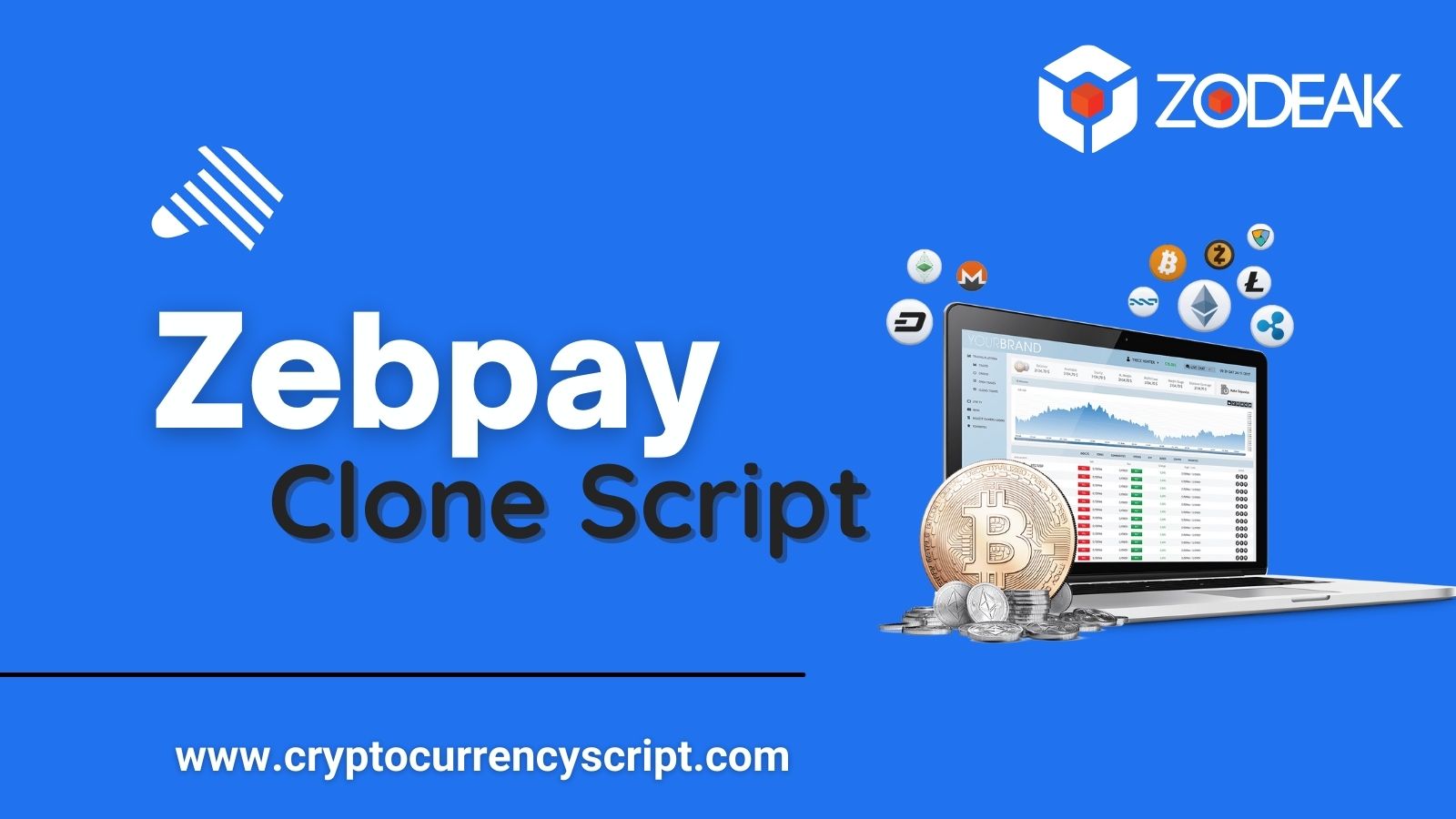Introduction:
Ever dreamt of creating your own empire in the thriving crypto world? Cryptocurrency exchanges are the corners where digital currencies buzz. Launching a cryptocurrency exchange platform presents compelling options: serve a global audience, influence the market, and potentially reap significant rewards. But before diving in, there’s groundwork to be done. From crafting a secure platform to driving regulations, this guide will equip you with the knowledge to launching a cryptocurrency exchange platform with confidence.
Step-by-step guide to launch a successful cryptocurrency exchange platform:
#1 Platform Security:
The world of cryptocurrency is thrilling, but it’s vital to remember because you’re dealing with valuable digital assets. That’s why starting a cryptocurrency exchange platform with strong security features is important. A secure platform safeguards your funds and boosts trust, allowing you to trade with confidence. This guide emphasizes the importance of platform security and outlines the essential features that should be implemented to safeguard your exchange environment.
Here’s why platform security is essential:
- Protect your assets: Hackers are continuously looking for vulnerabilities. A secure platform makes it greatly harder for them to steal your cryptocurrency.
- User Trust and Credibility: A secure platform gains the trust of its users, which is important for customer retention and attracting new users.
- Compliance with Regulations: Many jurisdictions demand cryptocurrency exchanges stick to rigid security standards to protect users and combat fraud.
- Prevention of Fraud and Scams: Strong security measures help control fraudulent activities and phishing scams, protecting users and the platform.
Important platform security features:
At Zodeak, we’ve incorporated important security features like Two-factor authentication (2FA), Anti-Phishing code, KYC Authentication, etc., to enhance exchange performance.
Now, explore some of the key security features you should integrate into your exchange platform:
#1 2 Factor Authentication (2FA):
This adds an extra layer of security by directing a second verification code, typically from your phone, when logging in or making transactions.
Why it’s important: Even if an attacker manages to steal a user’s password, they will be incapable of accessing the account without the second factor, greatly reducing the risk of unauthorized access.
#2 Anti-Phishing Measures:
Anti-phishing measures possess technologies and practices that assist in identifying and blocking phishing attempts, such as fake login pages and malicious emails designed to trick users into providing sensitive information.
Why it’s important: Phishing is one of the most famous methods for attackers to attain unauthorized access. By executing anti-phishing tools and educating users, the platform can significantly reduce the risk of these types of attacks.
#3 KYC (Know Your Customer) Authentication:
KYC processes implicate verifying the identity of users by instructing them to provide personal information and documentation, such as government-issued IDs and proof of address.
Why it’s important: KYC helps prevent fraudulent activities and ensures compliance with regulatory requirements. It also prevents illegal activities such as money laundering and funding of terrorism.
#4 Device management:
Device management features allow users to view and manage the devices that have access to their accounts, including the ability to log out or block unknown devices.
Why It’s Important: This feature helps users maintain control over their account security by providing visibility and management of all devices accessing their accounts. It can quickly identify and mitigate unauthorized access.
- Cold Storage: Cold storage holds the bulk of funds offline, out from online threats. Even if hackers enter your system, they can’t access these frozen assets.
- Anti DDoS Module: DDoS attacks flood your exchange with traffic, causing outages. Our Anti-DDoS module works like a security guard, screening out malicious traffic and maintaining your platform operational during attacks.
- Multisignature wallet: Multi-signature wallets need multiple permissions to move funds, adding an extra layer of security and lowering the risk of unauthorized transactions.
By prioritizing these security features, a cryptocurrency exchange platform demonstrates its commitment to protecting your assets and fostering a safe trading environment.
#2 User Experience :
To stand out, your exchange platform needs a stellar user experience (UX). Here’s why UX is king and what features you need to win:
Why UX Matters in Crypto
- First Impressions Count: New users form an opinion fast. A confusing platform scares them away. A smooth experience builds trust and keeps them coming back.
- Attracting All Users: Crypto isn’t just for experts. A user-friendly interface welcomes beginners and keeps veterans happy.
- Boosting User Confidence: A well-designed platform with clear information instills confidence in users, encouraging them to trade more actively.
- Building Loyalty: A positive user experience translates to satisfied customers who recommend your platform, expanding your reach organically.
Must-Have UX Features for Your Crypto Exchange
- Intuitive Interface: Keep it simple! Use clear menus, uncluttered layouts, and consistent design elements for easy navigation.
- Seamless Onboarding: Make signing up and verification a breeze. Guide users through the process with clear instructions.
- Frictionless Trading: Buying and selling crypto should be straightforward. Offer clear buttons, real-time market data, and customizable order options.
- Robust Security Features: Security is paramount. Integrate two-factor authentication, secure withdrawal confirmations, and clear explanations of these features to build trust.
- Educational Resources: The crypto space can be complex. Provide built-in tutorials, FAQs, and glossaries to empower users and make informed decisions.
- Responsive Design: Ensure your platform functions flawlessly on all devices, from desktops to mobile phones.
- Top-Notch Customer Support: Offer multiple channels for support, like live chat, email, and a comprehensive knowledge base.
By prioritizing UX and incorporating these features, you’ll create a crypto exchange platform that attracts users, boosts trust, and keeps them coming back for more. Remember, a user-friendly experience is the key to unlocking success in the competitive world of cryptocurrency exchange.
#3 Trading Features
To attract users and thrive in the competitive crypto market, your exchange platform needs a compelling feature set.
Here’s a breakdown of key features to consider:
- Fiat Integration: This allows users to easily buy and sell cryptocurrencies with traditional currencies (fiat) like USD or EUR. This widens your user base by creating crypto accessible to those new to the space.
- Search Filter Options: redefine the user experience by allowing users to filter tradable assets by market cap, price, trading volume, or other relevant criteria. This helps users identify the crypto they’re interested in quickly.
- Multi-Coin Support: Supports a wide range of cryptocurrencies to serve various user preferences and investment strategies.
- Escrow Security: Execute escrow functionality to hold funds securely during a trade. This mitigates risk for both parties by ensuring the buyer receives the crypto, only after the seller confirms receiving the payment.
- Multi-Payment Modes: Offer users diverse payment options above just bank transfers. This could include debit/credit card integration or popular e-wallet options for added convenience.
- Trade Pair Management: Provide users the capability to create and handle custom trade pairs, enabling them to trade between any two supported cryptocurrencies on your platform.
- Wallet Integration: Incorporate popular digital wallets to enable users to effortlessly store and handle their crypto assets directly on your platform. This makes a more streamlined user experience.
- Proximity Match: For geographically relevant transactions, assume a proximity match feature that connects buyers and sellers in the same region for peer-to-peer trades.
- Buy/Sell Ad Posting: Allow users to post buy and sell orders directly on your platform, enabling them to set their prices and terms. This can add depth to your order book and attract users looking for specific deals.
Zodeak as an Example:
We cannot support any specific platform, our company Zodeak claims to offer all the features mentioned above. It’s important to conduct your research to verify their claims and compare them against other leading cryptocurrency exchanges.
Remember, a feature-rich platform is just one part of success. Security, compliance, and a user-friendly interface are all necessary for creating a trusted and successful cryptocurrency exchange.
#4 Technology Stack
Choosing the right tech stack is critical for the success of your crypto exchange.
Here’s why:
- Security: A well-chosen tech stack with robust security features like encryption and access controls is vital for protecting user funds and fostering trust.
- Scalability: Your tech stack needs to be able to handle increasing user traffic and transaction volumes without compromising performance.
- Performance: Your tech stack should ensure fast order processing and smooth user interaction.
- Cost-Effectiveness: Building and maintaining your exchange needs to be financially sustainable. The chosen technologies should offer a balance between functionality and cost.
Powering Your Crypto Exchange: An Advanced Tech Stack
Here’s a glimpse into some advanced technologies you might consider for your crypto exchange:
- Frontend Technologies
- React.js: For building responsive and dynamic user interfaces.
- Vue.js: Another excellent option for creating a modern, maintainable frontend.
- TypeScript: Adds type safety to JavaScript, reducing bugs and improving code quality.
- Backend Technologies
- Node.js: Known for its high performance and scalability, ideal for handling real-time data.
- Python/Django: For rapid development and robust security features.
- Database Systems
- PostgreSQL: A powerful, open-source relational database system with advanced features like full ACID compliance.
- Redis: An in-memory data structure store, used as a database, cache, and message broker, ensuring fast data access.
- MongoDB: A NoSQL database that allows for flexible and scalable data storage.
- Blockchain Integration
- Ethereum: For integrating smart contract functionality.
- Bitcoin: Direct integration for handling Bitcoin transactions.
- Chainlink: To incorporate decentralized oracles for connecting smart contracts with real-world data.
- Infrastructure and DevOps
- Kubernetes: For container orchestration, ensuring smooth deployment, scaling, and management of applications.
- Docker: For containerizing applications, ensuring consistency across various environments.
- AWS/GCP/Azure: Cloud platforms offering scalable infrastructure, security, and compliance solutions.
- APIs and Microservices
- GraphQL: For efficient and flexible data querying.
- RESTful APIs: To ensure interoperability and smooth integration with other services.
- gRPC: For high-performance communication between microservices.
Remember, this is just a starting point. Carefully evaluate your specific needs and resources before finalizing your tech stack. Consider consulting with an experienced crypto exchange developers team like Zodeak to create a customized solution that propels your platform to success.
#5 Marketing Growth:
To thrive in this landscape, effective marketing is essential for your platform’s growth.
Here’s why:
- Brand Awareness: Marketing helps establish your brand identity, communicate your unique value proposition (features, security, ease of use), and build recognition among potential users.
- User Acquisition: Attract new investors and traders through targeted marketing campaigns. Utilize social media, content marketing, and influencer partnerships to showcase your platform’s benefits and convert prospects into active users.
- Increased Trading Activity: A larger user base translates to higher trading volumes, a vital metric for any exchange. Effective marketing fuels this growth cycle by bringing more people to your platform.
Effective Crypto Marketing Strategies for Success
Now, let’s explore some of the most successful marketing strategies for crypto exchanges:
- Content Marketing: Become a thought leader by creating informative blog posts, articles, infographics, and video tutorials. Educate users on crypto, trading strategies, and the benefits of your platform.
- Social Media Engagement: Build a strong presence on platforms like Twitter and Telegram. Foster discussions, answer user queries and participate in relevant conversations to build brand awareness and community.
- Influencer Marketing: Partner with crypto influencers who resonate with your target audience. Leverage their reach to promote your platform and its features in a credible way.
- Airdrops and Referral Programs: Offer free tokens (airdrops) or reward users for referring new customers. This incentivizes user acquisition and fuels platform growth.
- Targeted Advertising: Utilize targeted advertising platforms to reach users with specific interests in cryptocurrencies. This ensures you reach the most relevant audience for your exchange.
- Paid Advertising: Invest in paid advertising to reach a larger audience. Google Ads, social media ads, and display advertising on crypto-related websites can be effective.
By implementing a well-rounded marketing strategy that incorporates these tactics, your cryptocurrency exchange can stand out in a competitive market, attract new users, and achieve sustainable growth. Remember, the key is to constantly adapt your strategies based on market trends, user feedback, and the evolving regulatory landscape.
#6 Payment and withdrawal options:
The payment and withdrawal options you offer are crucial for attracting and retaining users on your cryptocurrency exchange platform. Here’s a guide to the important ones:
Traditional Payment Methods:
- Credit/Debit Cards: This is a familiar and widely accepted option for new users, allowing them to easily buy crypto with their existing cards. Be transparent about any associated fees.
- Bank Transfers (ACH/SEPA): This is a popular option for larger transactions due to lower fees compared to cards. Offer support for both ACH (US) and SEPA (Europe) for wider reach.
Cryptocurrency Deposits and Withdrawals:
- Support for Major Cryptocurrencies: List the top cryptocurrencies by market cap (Bitcoin, Ethereum, etc.) to cater to a broad user base. You can expand to niche coins later.
- Multiple Blockchain Networks: For certain cryptocurrencies, offer deposit and withdrawal options on different blockchain networks (e.g., ERC-20 and BEP-20 for Ethereum tokens). This allows users to choose networks based on fees and transaction speed.
Emerging Payment Methods:
- Peer-to-Peer (P2P) Trading: Integrate a P2P marketplace where users can trade crypto directly with each other using various payment methods (cash, bank transfer, etc.). This caters to unbanked populations and offers more flexibility.
- Third-Party Payment Processors: Consider partnering with established payment processors like Stripe or PayPal to enable users to buy crypto directly through their accounts. This adds convenience for users familiar with these platforms.
By offering a diverse range of secure and user-friendly payment and withdrawal options, you can cater to a wider audience and make your cryptocurrency exchange platform more successful. Remember to stay updated on emerging payment trends to adapt your offerings accordingly.
#7 Reports and Analytics
Essential Reports for a Cryptocurrency Exchange Platform
For a cryptocurrency exchange platform to thrive, providing users with clear and complete reporting and analytics is important. This empowers users to make informed decisions and fosters trust within the platform.
Here’s a breakdown of essential reports and analytics options for your cryptocurrency exchange:
- Transaction History: This report should provide a detailed breakdown of all user transactions, including:
- Date and Time
- Transaction Type (Buy, Sell, Transfer)
- Cryptocurrencies Traded
- Amounts
- Fees Incurred
- Order ID
- Portfolio Performance: A comprehensive portfolio performance report allows users to track the performance of their holdings over time.
- Order Book Report: This report displays the current buy and sell orders for each cryptocurrency pair on the exchange.
- Trade History Report: This report provides a detailed listing of all completed trades on the platform.
- Margin Trading Report (if applicable): If your platform offers margin trading, a dedicated report should provide users with insights into their margin activity, including:
- Loan details (amount, interest rate, collateral)
- Liquidation history (if any)
Advanced Analytics Options
In addition to core reporting functionalities, consider offering advanced analytics options to cater to more experienced users:
- Trading Fees Analysis: This allows users to analyze the fees incurred on their trades and identify areas for optimization.
- Market Depth Chart: A visual representation of buy and sell orders at various price points, giving users insights into market liquidity.
- Cryptocurrency Price Charts: Interactive charts enabling users to track historical price movements and perform technical analysis.
- Arbitrage Opportunities Report: This report can identify potential arbitrage opportunities across different cryptocurrency exchanges (for advanced users).
- Staking and Earn Reports (if applicable): If your platform offers staking or earning services, dedicated reports should track user earnings and rewards over time.
By implementing these reporting and analytics features, your cryptocurrency exchange platform can empower users to make informed decisions, fostering trust and loyalty within your user base.
#8 Continuous Improvement
Operating a successful cryptocurrency exchange platform needs constant vigilance, innovation, and adaptation to the rapidly growing digital asset landscape.
Security Enhancements:
- Regular security Audits: To find and fix possible vulnerabilities, conduct regular audits. Hire independent security specialists to provide objective evaluations.
- Advanced Thread detection: Put in place threat detection systems powered by AI. Update your anti-malware, anti-DDoS, and firewall software regularly.
Performance Optimization:
- Infrastructure scalability: Utilize cloud services to raise your infrastructure efficiently. Employ load balancers to distribute traffic evenly and prevent overloads.
- Code optimization: Regularly refactor your code to enhance efficiency and reduce latency. Profile and observe your system to determine bottlenecks.
User Experience (UX) Improvement
- Intuitive Interface Design: To improve the user interface, consistently collect user feedback. Make sure the platform is accessible and suited for mobile devices.
- Customer Support: Offer multilingual customer service around the clock. Use chatbots to quickly resolve and prioritize your queries.
- Educational Resources: Provide guides, tutorials, and webinars to help users understand the platform and cryptocurrency trading.
Regulatory compliance
- Stay Updated with Regulations: Observe changes in cryptocurrency regulations globally. Discuss with legal experts to ensure compliance with KYC (Know Your Customer) and AML (Anti-Money Laundering) laws.
- Transparent Operations: Keep operational transparency and release audit results regularly. Conduct compliance audits to make sure rules are followed.
Market Analysis and Adaptation
- Competitive Analysis: Examine competitors regularly to learn about consumer preferences and market trends. To remain competitive, modify your tactics.
- Feature Development: Analyse data to determine which features are most frequently requested. Give top priority to developing features that improve customer pleasure and engagement.
Technology Adoption
- Blockchain Technology Updates: Maintain the latest advancements in blockchain technology. Implement advancements such as Layer 2 solutions to enhance scalability and transaction speeds.
- Artificial Intelligence and Machine Learning:
Community Engagement
- Active Community Management: Participate in forums, events, and social media to interact with your community. Invite user input and put good ideas into practice.
- Reward Programs: Create incentives and loyalty programs to reward consistent and active users. To increase your user base, take advantage of referral schemes and airdrop advertising.
Operational Efficiency
- Workflow Automation: Reduce human error and boost efficiency by automating repetitive operations. Apply DevOps techniques to automate deployment and continuous integration.
- Performance Metrics: Establish and monitor KPIs, or key performance indicators. Track the effects of changes and identify areas for improvement with the use of metrics.
Continuous Learning and Training
- Staff Training: Regularly train your staff on the latest technologies, security practices, and regulatory changes. Encourage participation in industry conferences and webinars.
- User Education: Give regular updates and training materials for users to stay informed about best practices and platform features.
By implementing these continuous improvement measures, you can ensure your cryptocurrency exchange platform remains secure, efficient, user-friendly, and compliant with regulations. This proactive approach will help you stay ahead in the competitive landscape and foster long-term success.
#9 Legal and Risk Management:
Creating a successful cryptocurrency exchange platform involves navigating complex legal and risk management considerations. Here’s a concise guide to help you through the key steps:
Legal Considerations
1. Regulatory Compliance
- Licensing: Acquire the required licenses in the jurisdictions where you function. This contains money transmitter licenses (MTL) in the US and specific licenses in other regions like the UK, EU, and Asia.
- KYC (Know Your Customer): This involves verifying user identities to prevent fraudulent activities. This typically involves collecting government-issued IDs, proof of residence, and other relevant documentation.
- AML (Anti-Money Laundering): Implement robust AML programs to detect and prevent money laundering and terrorist financing. This includes transaction monitoring, suspicious activity reporting, and risk-based customer screening.
- Data Privacy: Assure compliance with data protection regulations like GDPR in the EU and CCPA in California. Protect user data to control breaches and misuse.
- Tax Reporting: Stay updated with tax regulations in all operating jurisdictions and offer users with required tax information.
2. Legal Structure:
Corporate Formation: Select a legal entity, considering the most favorable jurisdiction for crypto activities.
- Terms of Service and Privacy Policy: Draft clear and complete documents outlining user rights, responsibilities, and data handling practices.
- Intellectual Property: Safeguard your platform’s proprietary technology and branding through patents, trademarks, and copyrights.
Risk Management Considerations
1. Security:
- Cybersecurity: Finance in advanced security measures, contains multi-signature wallets, cold storage for assets, encryption, and regular security audits.
- Insurance: Get insurance to cover potential cyber-attacks, fraud, and operational failures.
2. Market Risks:
- Liquidity Management: Provide sufficient liquidity to manage high-volume trades and evade market manipulation.
- Volatility: Execute measures to handle the high volatility of cryptocurrencies, like stop-loss mechanisms and stablecoin support.
3. Operational Risks:
- System Reliability: Assure high uptime and robust infrastructure to handle user demand and trading volumes.
- Customer Support: Offer responsive customer service to manage disputes, technical issues, and compliance inquiries.
4. Legal Risks:
- Legal Counsel: Discuss with legal experts specializing in cryptocurrency and financial regulations to guide the growing legal landscape and reduce potential legal risks.
Where Crypto Exchanges Face Bans:
It is important to note that cryptocurrency regulations vary greatly around the world. Some countries embrace crypto, others have outright bans. Staying informed about the specific regulations in your target market is crucial. Some countries with complete or partial bans include: China, Algeria, Bolivia, Egypt, Nepal.
Crypto-Friendly Countries: Some countries, like Singapore, Canada, Germany, the US, Switzerland, and Portugal are considered crypto-friendly. These countries have clear regulations that allow crypto exchanges to operate with some restrictions.
By managing these legal and risk management considerations, you can create a resilient and compliant cryptocurrency exchange platform that encourages user trust and operates within legal boundaries.
End Words:
Tackling a cryptocurrency exchange is a difficult rewarding venture. By carefully evaluating the legal landscape, creating a secure platform, and promoting a successful user base, you can place yourself for success in this dynamic market. Remember, a robust foundation is key. Zodeak, a cryptocurrency exchange development company with its expertise in exchange development and security, can be your trusted partner in guiding every step of the process. Let’s turn your crypto exchange dream into a reality. Contact Zodeak today and unlock the future of finance.





